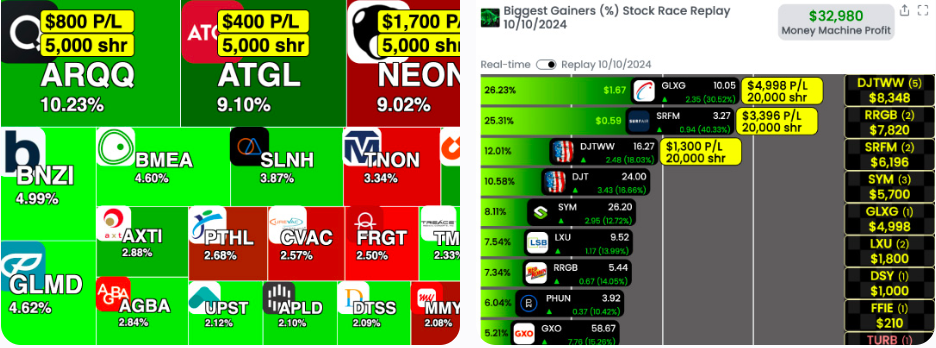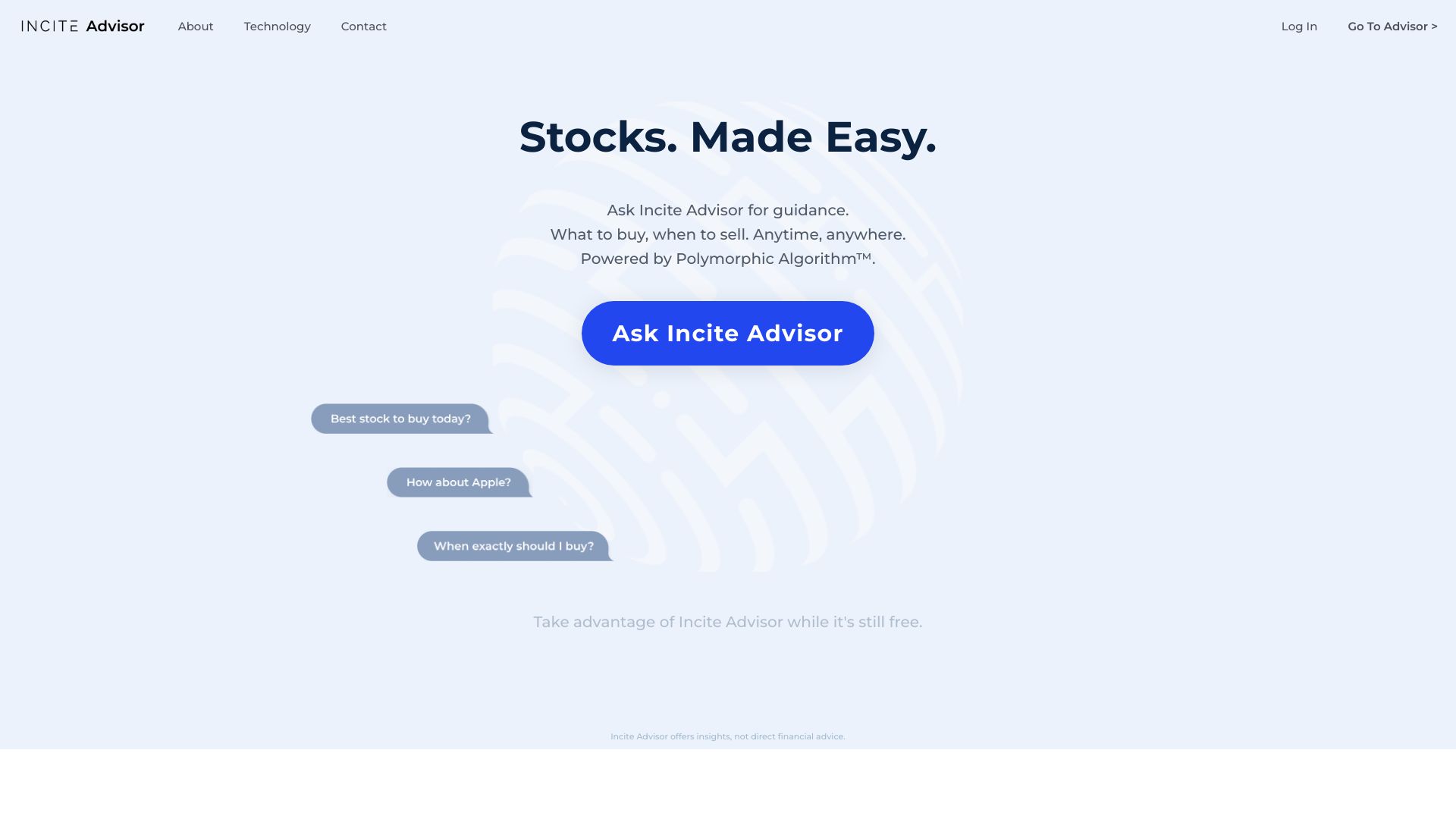20 Good News To Selecting AI Stock Predictions Platform Websites
20 Good News To Selecting AI Stock Predictions Platform Websites
Blog Article
Top 10 Ways To Evaluate The Integration And Compatibility Of Ai-Based Stock Prediction And Trading Platforms
Integration and compatibility are key factors when considering AI stock predicting/analyzing trading platforms. A platform that integrates seamlessly with your current workflows and tools will improve efficiency and efficiency. These are the top 10 guidelines for assessing the integration and compatibility of these platforms:
1. Check Brokerage Integration
Integration of the platform with your preferred broker or trading accounts: Ensure that the platform is compatible with the brokerage you have chosen or account.
Trade Execution: Check if the platform allows direct trade execution through the broker integrated.
Account synchronization - Examine to determine if your system can sync account balances, transactions, and positions in real-time.
2. Check API Availability
API access: Make sure the platform has an API (Application Programming Interface) for developers to build customized tools or to automate workflows.
API documentation - Make sure that API's examples and usage examples are properly documented.
Limitations on rate. Check that the API you are considering has reasonable rate limitations and can handle the volume of your use.
3. Integrating Third-Party Tools
Popular tools: Find out whether your platform is compatible with the most popular tools like Google Sheets or Excel.
Export and import of data. Make sure that the platform can easily export/import from or into any other software.
Extensions and plugins Check the platform's support for extensions as well as plugins to provide additional functionality.
4. Test Compatibility with Operating Systems
Desktop compatibility. Ensure the operating system you prefer (Windows, macOS, Linux) is supported.
Mobile compatibility: Verify whether there's a mobile app available for iOS or Android.
Web-based accessibility: To enhance flexibility, verify that the interface for your platform is accessible via the web browser.
5. Assessment of the Data Integration Capabilities
Data sources: Ensure the platform integrates with different data sources (e.g., market data providers, news feeds social media sentiment).
Real-time data feeds: Verify whether the platform supports real-time data integration to provide the most current analysis.
Historical data import: Find out whether the platform permits import of historical data for backtesting or analysis.
6. Verify compatibility between cloud and on-premise
Cloud-based platforms : the platform is accessible from any location that has internet access.
On-premises Solutions: If your would prefer to deploy on-premises ensure the platform you choose to use is compatible.
Hybrid models: Check if the platform combines cloud-based and on premise capabilities.
7. Verify Cross Platform Synchronization
Device synchronization. Check that the platform synchronizes data and settings across devices (desktops/laptops/mobiles/tablets).
Make sure that any changes made to one device reflect on the other devices.
Offline access: Check whether the platform permits limited functionality or data access when offline.
8. Assess the Compatibility of Trading Strategies
Strategies for trading that are automated or algorithmic must be supported by the platform.
Custom indicators: Check whether the platform permits the use of customized technical indicators or scripts.
Strategy backtesting: Determine whether the platform can be used for backtesting trading strategies using historical data.
9. Review Security and Compliance
Data encryption: Ensure that your platform has encryption for data during transit as well as in rest.
Authentication Verify whether the platform is secure in terms of authentication (e.g. Two-factor authentication).
Regulatory compliance - Check if platform complies pertinent regulations, e.g. GDPR. FINRA. SEC.
10. Test Scalability Performance
Scalability is essential. The platform needs to be able handle the growing amount of data, and number of users.
Performance under load: Determine if the platform remains flexible during market conditions with high volatility.
Resource usage: Find out whether the system is efficient in using the resources of the system (CPU memory, bandwidth, CPU).
Bonus Tips
User feedback: Check out user testimonials and reviews to evaluate the platform's capacity to integrate.
Trial period: Take advantage of the trial period for free or demo to test the platform's integration with your existing workflow and tools.
Customer support: Ensure that the platform provides robust customer support to integrate-related issues.
These tips will help you assess the compatibility and integration of AI software for analyzing and predicting stocks. This will help ensure that they integrate seamlessly with your current systems and increase your efficiency in trading. Have a look at the recommended inciteai.com AI stock app for website examples including best ai stock, ai stock, ai for investing, stock ai, ai stocks, market ai, incite, ai trading tools, chart ai trading assistant, ai stocks and more.
Top 10 Tips To Evaluate The Updates And Maintenance Of Ai Stock Predicting/Analyzing Platforms
It is important to assess the maintenance and updates of AI-driven stock prediction and trading platforms. This will help ensure that they're secure and in line with changing market conditions. These are the top 10 suggestions for evaluating update and maintenance procedures:
1. The frequency of updates
Check out the frequency at which updates are posted (e.g. every week, each month, or once a quarter).
What is the reason? Regular updates indicate active development and responsiveness of market developments.
2. Transparency of Release Notes
Tip: Go through the platform's release notes to find out what modifications or enhancements are being made.
The transparent release notes demonstrate that the platform is dedicated to continual improvements.
3. AI Model Retraining Schedule
You can ask the AI model what frequency it is trained.
Why: Markets evolve, and models must adapt to ensure accuracy and relevance.
4. Bug Fixes, Issue Resolution
Tips: Check how quickly the platform addresses technical or other issues that are that users have reported.
Reason: Rapid bug fixes help ensure the reliability of the platform and its functionality.
5. Security Updates
Tip: Verify that the platform is constantly updating its security protocols in order to safeguard the data of users as well as trading activities.
Why is that cybersecurity plays an important role in the financial services. It assists in protecting against fraud and breaches.
6. Integration of New Features
TIP: Check to see if the platform has added new functions (e.g. improved analytics, new sources of data) on the basis of the feedback of users and/or market trends.
What's the reason? Feature updates demonstrate innovation and responsiveness to user demands.
7. Backward Compatibility
TIP: Ensure that updates do not disrupt the functionality of your system or require a significant reconfiguration.
Why: Backward compatibility enables a smooth transition.
8. Communication with users during maintenance
Learn how your platform informs users about scheduled maintenance or downtime.
What is the reason? Clear communication creates trust and minimizes disruptions.
9. Performance Monitoring, Optimization, and Analyses
Tip: Make sure the platform monitors and optimizes system performance metrics (e.g. precision, latency).
The reason is that ongoing optimization can ensure that the platform is effective.
10. Compliance with changes to the regulatory framework
Check if the platform has changed its policies and features in order to be compliant with any new data privacy laws or financial regulations.
What's the reason? The compliance with regulations is essential to ensure the trust of users and to minimize legal risks.
Bonus Tip - User Feedback Integration
Verify if the platform integrates feedback from users into its updates and maintenance processes. This indicates a strategy that is user-centric and a desire to improve.
By evaluating all of these factors, it is possible to determine if you are sure that the AI stock trading system you choose has been well-maintained. It should be current and able to adapt to changes in market dynamics. View the top related site for more advice including ai trading tool, ai options, chart analysis ai, ai stock trader, ai share trading, ai tools for trading, chart ai trading, ai stock price prediction, best ai stocks, investing with ai and more.